
People often remember you based on their first impression of you, which is why it’s vital in life for you to know how to introduce yourself properly. Hence, you need to create and portray an accurate image of yourself to positively impact the person you’re speaking to. A good introduction is often able to show signs of friendliness, which makes the hiring managers as well as your new acquaintances feel comfortable to be around you.
So, what exactly is a self-introduction, and what does a good one look like? A good self-introduction often describes who you are as a person, what you do, and what others should know about you. It only requires a few sentences to cover your good points. It should also include your name, occupation or desired occupation, and necessary details about you. And, don’t forget to wear a smile along the way, greeting everyone with a simple hello is a sign of good mannerisms.
The first thing you should inform people about yourself upon arrival is to do a simple introduction which includes telling them about who you are and what you do professionally. And what’s better than using a straightforward sentence in delivering this sort of information.
Considering the context and settings you’re in are probably two of the most important things in preparing your introduction. You must align your introduction with the environment. Imagine talking about your favorite food as part of your introduction in a technology workshop. It’s entirely irrelevant to the context you’re in.
This section of your introduction is closely related to your job titles and descriptions. Everyone you will be working with will most likely be interested in your previous contributions to the professional line of work. Explaining what you’ve achieved previously will give them an idea of the areas you’re able to help them with.
Depending on your job and the title that you hold, you might need to explain and describe more about what you do. Little did you know that most job titles other than CEO, Director, and COO (you get the gist) don’t mean much to others. If you believe that your job title itself doesn’t talk much about what you do, then you should talk about them yourselves.
Assuming you’re introducing yourself in an international setting, you might offend some people without knowing if you did not take into account your audiences’ cultural context.

When you receive an invitation for an interview, it’s a good habit for you to research and learn more about the hiring company. Before attending their interview, the things you should know about the company include their mission and vision, services and products, past contributions, current clients, their targeted audiences, and even their competitors! Jot down this information in a paper and prepare some answers for their questions about themselves. This will help with your fluency, which is one of the vital points of your introduction.
a. Before the interview
The process of introducing yourself for an interview begins the moment you arrive at the company. It’s a basic courtesy to introduce yourself to the receptionist and state why we are here at their company. A simple “Hi, I am [Name], and I have an interview at [time] for the role of [name of the job] if your company” would be enough.
b. During the interview
Once you’ve been taken to meet your interviewers, it’s crucial to greet them with a firm handshake. And when everyone’s ready, you can begin to introduce yourself to the interviewers. During the interview, make sure you answer their questions with determination and don’t talk too fast. It’s okay to pace yourself when you speak.
c. After the interview
Once you’ve finished your interview, remember to give a proper farewell to your interviewers. Expressing your gratitude to be given a chance to be interviewed might help you create a better impression on your interviewers.
Of course, having to use body language helps you emphasize the words coming out of your mouth. It shows that you’re confident and are sure of who you really are. However, overusing your body language isn’t a good idea either. So, remember to keep yourself relaxed with your chest up high to help you make a better impression and communicate better with your interviewers.
“Hello, my name is [Name]. I am from [place], and I completed my [bachelor’s degree] from [University] in [year].
I have been working with [company’s name] for almost [time that you’ve been in the company]. During my time there, I have learned all of the operational procedures, and I managed to get promoted from an executive to a manager.
I am confident that with my qualifications and working experience, I am best fitted for the hiring role. Not only am I passionate about [your field of work], I am also [explains the soft skills that you have]. I am looking to join your company in hopes to explore new dimensions in order to develop my skills further.”
Hello, I am [Name] and I am from [place]. I completed my [bachelor’s degree] from [University/college] in [year].
As a student, I’ve accomplished [name your accomplishments]. I’ve also participated in [name the clubs/societies you’ve participated], which help develop my skills in [name the soft and hard skills you’ve acquired].
I also took extra language classes, and currently, the languages that I can use include [name the languages that you can use].
I look forward to hearing from you again, and I will be happy to answer any queries that you might have for me.”

When you’re doing a self-introduction, the first thing to remind yourself is to avoid narrating the contents of your resume and cover letter. Your hiring managers probably already know about you, based on the documents you’ve submitted. It’s crucial to show them that you’re more than just what you portray in your resume and cover letter.
Read more: How To Write An Effective Cover Letter That Stands Out (With Samples)
Another important thing to remember is your body language. How you present yourself is just as important as what you say about yourself. A strong and calm voice, steady eye contact, and open body language will all shape the delivery of your message. This is backed by research which found that 20% of interviewers said they rejected applicants if they crossed their arms, while 65% of interviewers said lack of eye contact led them to reject a candidate.
Read more: Top 12 Most Common Reasons Recruiters Are Rejecting Your Job Applications
You should also avoid taking a lot of time when you’re introducing yourself. In other words: Don’t ramble on and on…and on (no need to narrate your life story!). Explaining and highlighting specific qualities and experiences that can be related directly to the job role would be enough to impress them.
Last but not least, do not ask your interviewers, “What do you want to know?” This shows your interviewers that you’ve come unprepared, and have not thought of what to say during the interview.
Regardless of whether we’re in a professional or a casual setting, it’s very important for you to prepare a good self-introduction as it helps you make a good impression on others. When you’ve gone to a place unprepared, you’ll often find yourself consuming a lot of time figuring out how to best describe yourself when you’re approached by anyone new. Hence, it’s very useful if you already have a well-thought self-introduction that portrays you perfectly.

The word ‘team player’ is one of the most frequently discussed terms in the corporate industry. A team player essentially refers to a person who is reliable and works efficiently within a team setting. A team player is also able to take on additional assignments for accomplishing team goals. Organisations often look for team players during recruitments as having such employees significantly improves the team’s performance.
In any workspace, having a good team player can be quite beneficial since they make significant contributions to the success of any business. A good team player is helpful in times of crisis like conflict management and are excellent problem solvers.
They can also boost morale by inspiring others in the team and encouraging them to take initiative towards reaching a goal. Furthermore, a team player keeps the team functioning smoothly, and helps reach desired accomplishments.
As important a team player is to a team, it’s not very easy to be one. Being a good team player can be challenging. However, keeping in mind these 18 qualities of an excellent team player, anyone can be an asset to their teams in no time!
To be a good team player, it’s crucial to be aware of the job role and its entitlements and responsibilities. It’s with a good understanding of the job role that a team player can meaningfully contribute to the team’s assignments, help the team function smoothly, and help progress the business towards greater achievements. Understanding the job role is also helpful in streamlining the work and collaborating with other members of the team.
A team player with a good understanding of the industry can grasp the purpose and urgency of assignments better, figure out creative solutions, and help the team accomplish desired business goals sooner.

The primary aspect that sets a team player apart from others is the ability to work in a team-based environment. Being a team player requires an individual to be able to work collaboratively with others, welcome diverse ideas and solutions, and work together towards a common goal. Their ability to collaborate with others significantly improves the team’s productivity and contributes to maintaining harmony and goodwill within the team.
Active listening is one of the most essential qualities of a team player. Active listening allows an individual to understand and focus on the task at hand, understand the purpose and the urgency of the assignment, and appropriately prepare for the same. Active listening is also beneficial when dealing with other members of the team, having a clear grasp on their abilities and shortcomings, and helping the team wherever necessary.
Holding oneself accountable is a great professional strength that can be used to motivate yourself and others around you. It’s important for prioritising a goal and realise its purpose. In addition, it can prove to be effective in evaluating the quality of work, supporting the team, and bringing about lasting improvements.
No workspace is free from problems or conflicts. However, as a team player, it’s important to be able to solve problems when the need arises. Problem-solving is a quality every team player must have to be able to help the team run efficiently by resolving conflicts and managing crises.

A team is often composed of people with varied ideologies and opinions. Staying flexible can be effective while working in a team because it ensures that one is welcoming of different ideas and solutions, and it also helps avoid major conflicts within the team.
The office can be dull and dreary at times. However, having a positive attitude can go a long way! As a team player, it’s vital to have a positive attitude. It helps all team members recuperate from failed ventures and professional losses, build morale, and move on to the next assignment with more vigour.
Committing to the team is essential when it comes to being a good team player. Committed team players are great assets to the entire team, helping the team get through with tasks, and reach goals. In addition, committed members make decisions that benefit the organisation and enhance team performance.
Engagement is one of the most important qualities of team players. It boosts conversation within the team, helps in figuring out viable and creative solutions, and assists in overcoming conflicts in the workplace better.
Reliability is among the primary aspects that corporations look for in team players. Reliability in the workplace usually refers to the ability to follow through with their promises and abilities, helping the business forward.

As one of the fundamental personality traits, being respectful of the workplace, towards colleagues, and other associations is not just restricted to team players. While working in a team-based environment, however, being respectful is crucial. Being respectful towards one’s assignments and colleagues is not just polite, but it invites respect in return.
Working in a team is not always a cakewalk. Being intrinsically motivated is important for team players to collaborate and work in teams, it ensures a higher level of accountability within team players and is important for raising morale and boosting productivity to accomplish a common goal.
While working in a team, honesty is certainly the best policy. Honesty plays a vital role in creating trust within the team, making a suitable work environment, and ensuring smooth functioning within the team.
Being detail-oriented is another important aspect of being a team player. It allows the individual to manage tasks with enhanced proficiency and reduces the chances of errors. Being detail-oriented usually refers to the ability to pay close attention to minor details and make necessary adjustments to errors before they snowball into a bigger issue.
Team autonomy is a quality that allows better communication and engagement within the team, improves team management, and benefits the team in terms of performance.
Being persistent is one of the most valuable qualities that a team player can have. It enables the team to keep functioning even in adverse situations, keep up spirits, and emerge out of difficulties much stronger as a team.
Self-awareness is one of the greatest qualities of any team player. It shows that you recognise your strengths and weaknesses. Self-awareness allows an individual to accept their limitations, master their stronger skills, and apply them productively to assist the team. Self-awareness also brings about personal growth in the workspace.

A team player is appreciated and valued by every organisation worldwide (who wouldn’t want someone who can get along with anybody plus is supportive and helpful?). Regardless of the academic excellence and professional experiences you had, if you’re not a team player you will find it hard to adjust in any setting and will rarely achieve professional satisfaction.
It’s, however, not at all difficult to become a team player. Just keep the above-mentioned points in your mind and you can easily be the team player that your colleagues and peers look up to! Also, look for these traits when you hire employees for the teams in your company. It will help your business grow and achieve your goals faster. After all, a company is like a ship that requires all hands on board to move forward.

Decisions, oh, decisions. Our lives are full of situations where we’ll be forced to make decisions, whether for better or worse. Having the skills to help you choose the best path/solution is one of the most important traits in life. Why? That’s because making sound and logical decisions will help contribute to both your professional and personal success. Some decisions may be harder than most, and these usually come with heavier consequences, thus making you doubt yourself. However, trying to escape from the responsibility of having to make a decision is not the right way either.
No entrepreneur or renowned leader will ever say that they’ve never made a wrong decision in their life before. In fact, there’s a saying which goes, ‘to err is to be human’. Instead, they’ll tell you that you can choose to adopt multiple ways and techniques to improve your decision-making skills, which will ultimately make you a better person and positively impact your life in every aspect!
So, what exactly is a good decision-maker? He/she will make decisions based on logic and rationality, rather than acting on emotions and impulse. And precisely because of that, part of their decision-making process involves doing research and understanding the consequences of the choices made. By doing so, they know what’s best for them, and will not let personal biases get in their way.
Open-mindedness is one of the common traits that all good decision-makers have. When needed, a good decision-maker will involve others who are trustworthy, in order to rely on their wisdom and opinions in making the right choices. Sometimes, you make decisions not only for yourself, but for your career as well as on behalf of your company and colleagues. Now, imagine what would happen if you didn’t think things thoroughly, and made one wrong move that would have dire effects on everyone involved!
Like it or not, we’ll always have to make lots of decisions in life, especially as we grow older and have more responsibilities at work or home. It’s common for us to thus feel overwhelmed, stressed, and confused when it comes to such situations. Because of these emotions, we often become more indecisive as the situation gets worse, and the long-term impact is that it may cause us to lose confidence in ourselves.
Indecision in life may negatively impact how we feel about ourselves, so it’s always important to take note of the strategies and techniques in making good decisions during these challenging times. As such, honing skills to help you analyse a situation quickly and competently will allow you to choose the paths that will ultimately lead to the best possible outcomes.

It’s always good to know your own goals before you start strategising in making an effective decision. Understanding why you’re making that particular decision, what purpose would it serve, and how it may affect the problem at hand will undoubtedly help you to make better decisions. In this way, you’ll get to stay focused on what’s important when deciding on the path to take.
It’s always good to gather information that’s directly related to the problem before deciding on a solution. Doing so helps you better understand what needs to be done, as well as generate possible ideas and outcomes of the decisions you’re about to make.
While doing as much research as possible sounds like it should be enough for you to make a good decision, it really isn’t! This is because it’s all just raw data, so another thing to consider after you’ve gathered information is to seek the opinions of people you trust. Be it a friend, family, or experts and professionals, these are the people who can assist you in coming up with better solutions.
The more choices you have, the more likely you’ll make a bad call. Your mind might be bogged down by all the information and choices in hand. So, it’s time to carefully go through your list of potential decisions, and whittle it down to just a handful. It would help if you also tried speaking to others about your decision-making process. They might be able to offer fresh perspectives, and open up alternative paths that you’ve never considered.
One of the best things you can do before making a final decision is to consider the consequences of each and every choice. List down all the pros and cons of every option, and try to draw up a quick list of every benefit and drawback the decision could have. Sometimes, doing that helps you to realise which decisions are better than others.
Of course, having as many choices as possible in the early stages of your decision-making process is helpful. But as we mentioned above, having too many of them often leads to confusion. Eliminating as much noise (read: distracting and clashing options) as possible throughout your decision-making process helps reduce the feeling of confusion and being overwhelmed. Leaving only the important ones gives you a better idea of the outcome that you want.

We all know that rushed decisions will usually turn out to be the bad ones. When you decide on your choices too quickly, more often than not, you’re just acting upon impulses. It’s essential for you to take the time (where possible) to analyse every decision before choosing one based on natural inclinations.
But what if someone wants a quicker answer? You don’t have that much time to think! Well, there’s always the possibility of you asking for more time to research and reflect on the info gathered before making the decision. Try asking yourself pertinent questions and doing a comparison for the decisions you’re about to make. Doing so will often eliminate the less ideal options making it easier for you to decide.
We’re bound to make wrong decisions in life sometimes, which may have led to an undesirable outcome. Instead of getting discouraged, you should know that these wrong decisions are the ones that help you to make better decisions in the future because of the lessons that you inevitably have to learn. It also enables you to identify the areas of improvement, and figure out how you could achieve a better outcome next time.
Every decision you make comes with a risk. Even those which you’re already familiar with making! This is because there’s a high chance that you’ve grown accustomed to certain habits that cause you to make these poor decisions. You often don’t need to think much when you’re about to make these decisions, and precisely because of that, it might bring you down the wrong path. For example, you’re so used to sneakily playing mobile phone games everyday at work that you no longer think about it, and just do it. However, one day a HR personnel catches you in the act and you’re given a warning letter due to behavioural issues, and you realise that you made a bad call.
When you’re faced with a difficult decision, sometimes framing your problem in a different way will help. A slight change in your thinking can significantly affect how you perceive the issues. Hearing “80% of people who undergo this professional certification will pass” is better than hearing “20% of people who undergo this professional certification will fail”. The facts are the same, but the latter term is usually perceived to have a greater risk.
When you have to deal with tough decisions, you might overthink the consequences of each of those choices. However, overthinking your choices might ruin your ability to make the right decisions. You’ll probably be overwhelmed by your thoughts if you keep thinking about the pros and cons for too long. Where possible, consider sleeping on your problem and let your brain work through it as you sleep. The correct answer might just come popping in during the night!

We believe that making the wrong decisions is better than not making any decision! Making bad or wrong decisions show us that there’s still room for improvement. When your choices don’t turn out as you expect them to, then it’s time to reflect and ask yourself what went wrong. It’s always good to try and find out what lessons you can glean from the choices you’ve made, but remember not to dwell on your mistakes for too long. It might just harm your mental health.
It’s okay to admit that we’ve all got shortcomings of our own. Sometimes we’re just biased in some ways, and when it comes to listening, most of us prefer to do things the easy way instead of the hard way. Scientists call this phenomenon the heuristic experience (i.e., mental shortcuts that allow people to solve problems and make judgments quickly and efficiently). While these mental shortcuts save you a lot of time in making the little decisions in your life, they might cause you to walk on the wrong path in the long run. Acknowledging this shortcoming of ours may help us be more objective over time.
Once we’ve decided on something, we’re most likely going to cling to that decision. Such is the nature of humans. Psychologists referred to this as ‘belief perseverance’. Admitting that there are better options out there proved that our decisions are wrong or are less accurate. Hence, there’s a good chance that we will develop a certain degree of perseverance, so much so that we believe that our decisions are the only right choices. The best way to make sure that our decisions are correct is to argue with the complete opposite decisions.
In reality, there are more things for you to consider when it comes to making decisions, such as seeking out learning opportunities to hone your skills. For example, you can opt to work with an expert career coach or sign up for a certified decision-making course (yes, there’s such a thing!) that’ll guide you better.
It doesn’t matter if these decisions require very little or a lot of effort, we’re constantly making decisions throughout our daily lives. So, remember to always think things through, and do your best to improve your skills as a decision-maker. We promise you that your life will change when you start choosing the right paths that bring better outcomes.

Content marketing has quickly and easily become the most popular and effective form of marketing all over the world. This is mainly due to the continuous rise of social media, resulting in high demand of talented and creative content marketers.
But even with there being demand to fill these roles, landing a first interview can be difficult regardless if it’s your dream company or not. The best thing you can do is submitting a well thought-out and composed resume with the help of GRIT’s resume guide for content marketers. Make a great first impression and get your foot through the door with just two pages!
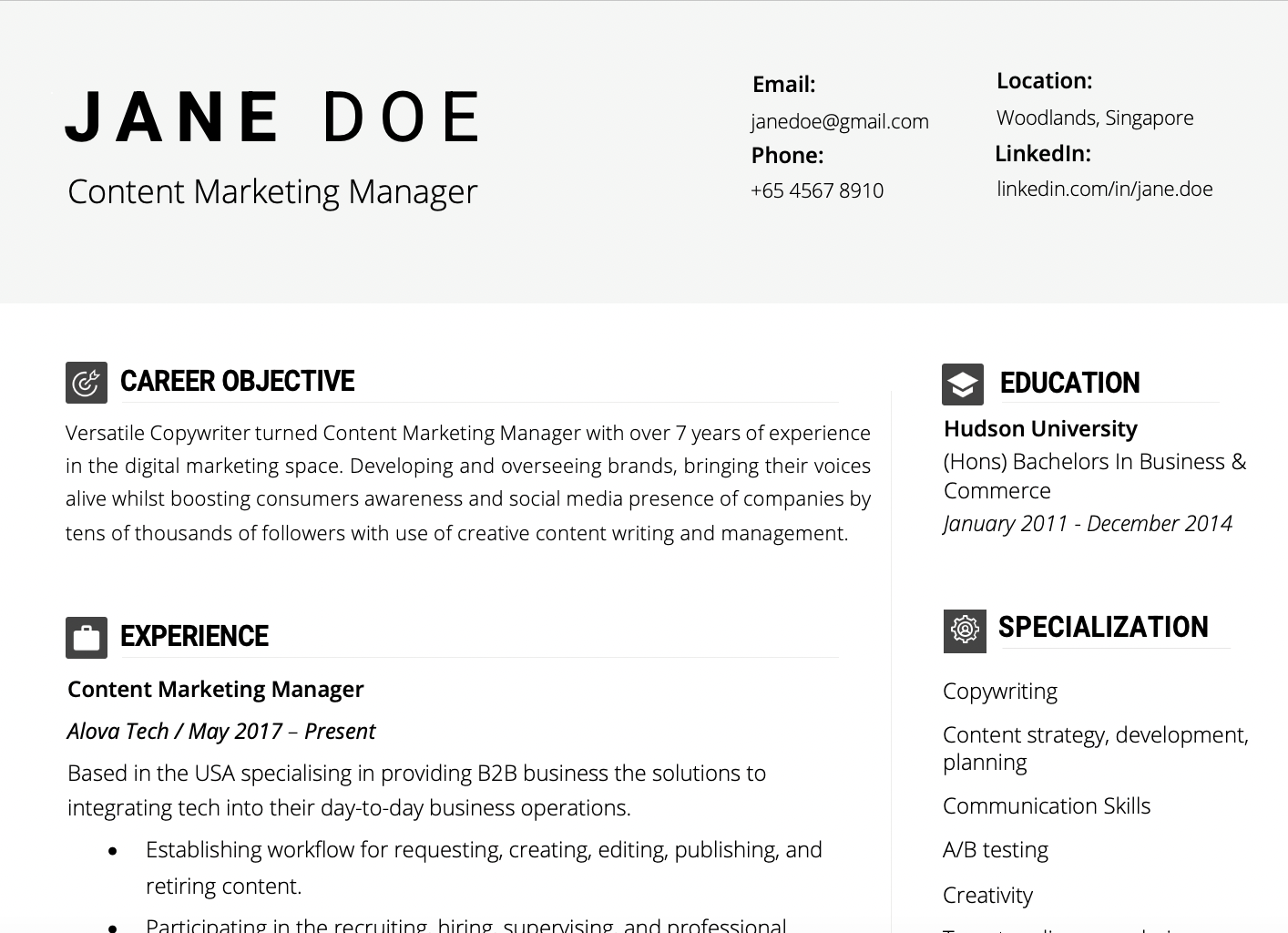
Keep all of the information on one page for a well-received resume. If your career spans further than a decade, you can get away with a two-page resume. Keep in mind that resumes should be concise and targeted. This is the flow of a resume you should follow:
As for formatting, these are the basics you need to know:
When writing your summary include a brief introduction into your professional background, qualifications, and motivation for advancing your career in this field. Give an example of why you enjoy what you do or why you wish to improve and expand your talents.
Example: Versatile Copywriter turned Content Marketing Manager with over 7 years of experience in the digital marketing space. Developing and overseeing brands, bringing their voices alive whilst boosting consumers awareness and social media presence of companies by tens of thousands of followers with use of creative content writing and management.
When drafting your work experience portion of your resume, keep two things in mind: bullet points and specific experience.
#1 Bullet Points
#2 Specific Experience
1) The Job Description: Develop strategic platforms and ideas to articulate content priorities, role of channels, tone of voice, content, and overall social architecture.
2) Your Experience: Brainstormed and conceptualised several content ideas with tone of voice and media platform in mind, resulting with a 30% increase in followers and 20% engagement every month.
Even without any work experiences you can still craft a great resume as someone starting their career journey, after all everyone has to start from somewhere. Here’s what you can include instead of full-time work experiences.
Action words in resumes are adjectives that are used to describe achievements and experiences. It’s a terrific method to get the attention of the hiring manager and highlight your accomplishments. Words like these are great action words to consider when writing your resume:
Since a resume is short and to the point, here’s what to include and what to leave out.
In a separate piece of paper you’ll want to include the following to boost your chances at being selected for an interview. If you have a website with the following showcased, feel free to include your site under the contact information section of your resume.
If you’ve been meaning to up your value as a content marketing manager, there are a handful of certificates you should look into regardless if you’re starting out or a veteran looking to sharpen your skills. Many are offered solely online with great time flexibility to work with your schedule and learning pace. Here are some certificates worth considering:
Awards are a great reminder of the achievements you’ve accomplished for your company or with your industry.
A cover letter is a terrific complement to any resume because it allows you to go into greater detail about why you’re the best fit for the job. Instead of sending out generic resumes to each potential employer with an open position, a cover letter demonstrates your want to work for the company you’re applying to. The structure of your cover letter matters as much as the content itself.
Make sure the font size and spacing are easily readable. When describing your successes and experiences, utilise action words to emphasise your relevant talents to the position you’re wanting to be recruited for.
Need a few more details? Check out our in-depth guides on writing a resume, CV and cover letter. All guides are suitable for any profession with tips for careers across the board.

Marketing is key to the success of just about any business on the planet. The individuals, known as performance marketers, understand this better than anyone else in the digital space. If you’re a performance marketer looking for new role opportunities, but are unsure of how to get them, you’ve come to the right article.
But before you do anything else, you need to have a well-crafted resume to help you land the first interview with the hiring manager of your dream company. GRIT’s guide breaks down everything you need to know about writing a well written performance marketer resume.

Keep all of the information on one page for a well-received resume. If your career spans further than a decade, you can get away with a two-page resume. Keep in mind that resumes should be concise and targeted. This is the flow of a resume you should follow:
As for formatting, these are the basics you need to know:
When writing your summary include a brief introduction into your professional background, qualifications, and motivation for advancing your career in this field. Give an example of why you enjoy what you do or why you wish to improve and expand your talents.
Example: Performance marketing manager with over 7 years of experience in overseeing projects with cross-functional teams for social media, SEO, and pay per click marketing with the use of creative briefs for new online marketing campaigns and ensuring that assets are compliant and delivered timely. Acting as a liaison between external affiliates and our marketing team. Furthermore, experience in coordinating online marketing calendars with cross-functional partners.
When drafting your work experience portion of your resume, keep two things in mind: bullet points and specific experience.
#1 Bullet Points
#2 Specific Experience
1) The Job Description: Understand the complexity of different stages in a user journey and able to design/test campaign structures to optimise conversions at different steps of the funnel
2) Your Experience: Streamlined the users journey through vigorous test campaigns to uncover which would optimise conversions and at which point of the sales funnel.
Even without any work experiences you can still craft a great resume as someone starting their career journey, after all everyone has to start from somewhere. Here’s what you can include instead of full-time work experiences.
Action words in resumes are adjectives that are used to describe achievements and experiences. It’s a terrific method to get the attention of the hiring manager and highlight your accomplishments. Words like these are great action words to consider when writing your resume:
Since a resume is short and to the point, here’s what to include and what to leave out.
In a separate piece of paper you’ll want to include the following to boost your chances at being selected for an interview. If you have a website with the following showcased, feel free to include your site under the contact information section of your resume.
If you’ve been meaning to up your value as a performance marketing manager, there are a handful of certificates you should look into regardless if you’re starting out or a veteran looking to sharpen your skills. Many are offered solely online with great time flexibility to work with your schedule and learning pace. Here are some certificates worth considering:
Awards are a great reminder of the achievements you’ve accomplished for your company or with your industry.
A cover letter is a terrific complement to any resume because it allows you to go into greater detail about why you’re the best fit for the job. Instead of sending out generic resumes to each potential employer with an open position, a cover letter demonstrates your want to work for the company you’re applying to. The structure of your cover letter matters as much as the content itself.
Make sure the font size and spacing are easily readable. When describing your successes and experiences, utilise action words to emphasise your relevant talents to the position you’re wanting to be recruited for.
Need a few more details? Check out our in depth guides on writing a resume, CV and cover letter. All guides are suitable for any profession with tips for careers across the board.

Goals. A thing that everyone has and/or wants, but not everyone has the drive and determination to achieve them. Simply thinking about accomplishing them can bring a big smile to our faces, but why is this so? Well, the act of setting and achieving goals (no matter how big or small) are one of the things that keeps us going in our everyday lives.
However, no goals ever achieve themselves without proper planning. This is why having an action plan is essential to give you a better and more precise idea of how to accomplish them. Without a well-thought action plan, you might not get the motivation you need to push yourself forward.
So, what exactly is an ‘action plan’? An action plan consists of the steps/tasks you need to do to achieve your goals. It’s a document that details all the necessary steps you need to take so think of it like a clear path towards the right direction, then breaks the steps into a more doable process, and helps you reach a specific target according to the timeframe you’ve set.
A well-thought action plan is helpful not only to you as an individual, but also to your organisation. It helps you to stay focused on your career and personal life, while allowing you to monitor every progress you’ve made to get closer to where you ultimately want to be!
To write a good action plan, set SMART (an acronym for ‘specific, measurable, attainable, relevant, time-based’) goals. Your goals should not only be well-defined with precise details (specific), it also needs to be measured to keep track of your progress (measurable). In addition, your goals should be ones that can be accomplished (attainable), relevant to your needs, abilities, and interest (relevant), as well as have a clear deadline of what needs to be done (time-based).
Often enough, people mess up accomplishing their goals due to delaying taking any action on the tasks for far too long. This is why setting attainable milestones are a crucial part of your action plan. Take a step back and look at the amount of time you have. Start breaking up your goals into smaller tasks so that you can move towards the end goal efficiently.

However, after breaking the bigger goals into smaller objectives, you need to list them down. The list will help you to know which tasks are more important than the others, so that you can start planning your actions in a step-by-step manner. The list also allows you to check if you’ve missed anything crucial while breaking up the bigger objective. Having this list of actions will ensure that all the objectives are attainable and relevant to your goals.
It would help if you created a schedule to ensure all the smaller objectives are in order. Sometimes, smaller goals may have the same due dates. Hence, it’s recommended to create a timeline to smooth out the flow of your progress. Having a schedule helps you keep track of time and rearrange your tasks schedule based on its importance and urgency.
It’s essential to assign the right tasks to the right people. Assessing the strengths and weaknesses of your teammates helps you make better decisions in assigning your team members’ roles and responsibilities. After assigning the tasks, make sure that everyone is in agreement with their responsibilities in taking charge of an objective. It’s also crucial to list down the resources needed in completing the tasks so that the allocation of your resources for things such as money, equipment, and software/programmes will be carried out perfectly.
Monitoring of progress can be done in different ways, including reading internal reports, holding regular meetings, and more. If we don’t monitor our progress, we might lose track of where we are now and what we’re currently doing. The internal reports and regular meetings give us a clearer picture of the direction we’re heading, which helps us keep track of our progress in attaining our goals.
Considering your talents and expertise are crucial to let you know about your own strengths and weaknesses. Looking at our weaknesses might give us an idea of the areas that we can and need to improve. On the other hand, looking at our strengths lets us know how and where to apply our abilities in completing the tasks. Looking at the overall talents and expertise might also give us the idea of whose help we should seek to strengthen our team in accomplishing the bigger goals.
When we have a bigger goal, it’s almost close to impossible to accomplish it all on our own. One way or another, you have to start seeking help from the right people, and build the right team to reach your goals. Remember the point above about looking at strengths and weaknesses? By doing that, you get to allocate tasks that best suit your strengths, and you’re also able to delegate tasks to other people in the areas you’re weak at.
Read more: Great Leaders And Their Company’s Success: 12 Tips On How To Delegate Effectively

Success itself is a mindset. This saying has been around the professional world for as long as anyone can remember. Having a positive mindset is the equivalent of surviving the tough challenges you’ll encounter in the path of reaching your goals. And usually, when you’re faced with a storm, it’s relatively easy for you to stay gloomy and give up on your dreams if you didn’t already develop a positive mindset that helps you see the silver lining in every cloud.
Motivation is what drives us to get to where we want to be! Hence, it’s crucial to keep yourself motivated by setting realistic goals that are attainable and relevant to your life. in addition, surround yourself with like-minded people who’ll be able to push you out of your comfort zone, and remind you of all the tasks you seek to accomplish. Having meaningful and realistic goals will help encourage you to push forward instead of bringing yourself down.
Holding yourself accountable in every decision you’ve made and for everything you’ve done is part of your responsibilities to accomplish your goals and dreams. However, you don’t have to bear these responsibilities alone. You can always recruit people who have the same end goal to be part of your team and split the duties. The idea of holding yourself accountable is not meant to pull you down, but it’s meant to be a boost to keep yourself on track with your goal.
Constructive feedback is always welcome in order to improve your overall performance in achieving your goals. Limiting your horizon based on what you see alone probably wouldn’t help you much on your journey. Hence, seek and listen to both the good and bad feedbacks given by people whom you trust. This will be served as a tool for you to re-assess your own standards and expectations.
To err is to be human. It’s okay if we make some wrong choices in life, which require us to overhaul the whole plans we’ve made. Change is a constant part of life, and it’s vital for you to be flexible and adaptive when it comes to changes. Don’t get blinded by the smaller objectives, which makes you lose focus on the bigger goals. If changing certain aspects of the plan might lead to a better future, it really is okay to do so.
Every time you’ve accomplished something, even if it’s a small accomplishment, do remember to pat yourself on your shoulders. Remember, your journey towards the end goal is long and hard, and if you don’t take a break once in a while, you’ll be all burnt out before you even know it! So, it’s good to lay back and acknowledge these small accomplishments (with a little reward thrown in too). Doing so might motivate you and your team, which boosts the overall morale of your organisation.
Read more: 11 Signs That You’re Having Job Burnout, And Ways To Treat It
Trust us when we say a goal without a plan is nothing but a wish. As the saying goes, “when you fail to plan, you plan to fail”, and that’s just how the real world works. Make sure that first and foremost, your goal is truly attainable and realistic. From there, it’s only a matter of planning the right steps that you can take, and it’s okay to sit down and reset if ever you hit a roadblock or make a wrong turn.
So, the bottom line is, learning to set SMART goals and developing an action plan does help you to achieve your goals more efficiently without wasting unnecessary resources. Plan ahead what you’re going to do, break it down, and set a realistic timeframe. We wish you the best of luck in your future endeavours, and we hope this guide helps you accomplish what you set out to do!

Social media is king right now, and steering companies into oceans of engaging followers, viral posts, and algorithm-friendly content are social media managers. There’s just always so much happening on social media, and businesses are always looking for the right captain to navigate the business in the right direction of unpredictable waters. This is why social media managers are in such high demand in every industry.
A well-written resume is easily your easiest way to land a first interview with a hiring manager. There are a handful of components that make up a great resume and we’ve broken it down for you to the bare basics of it all.
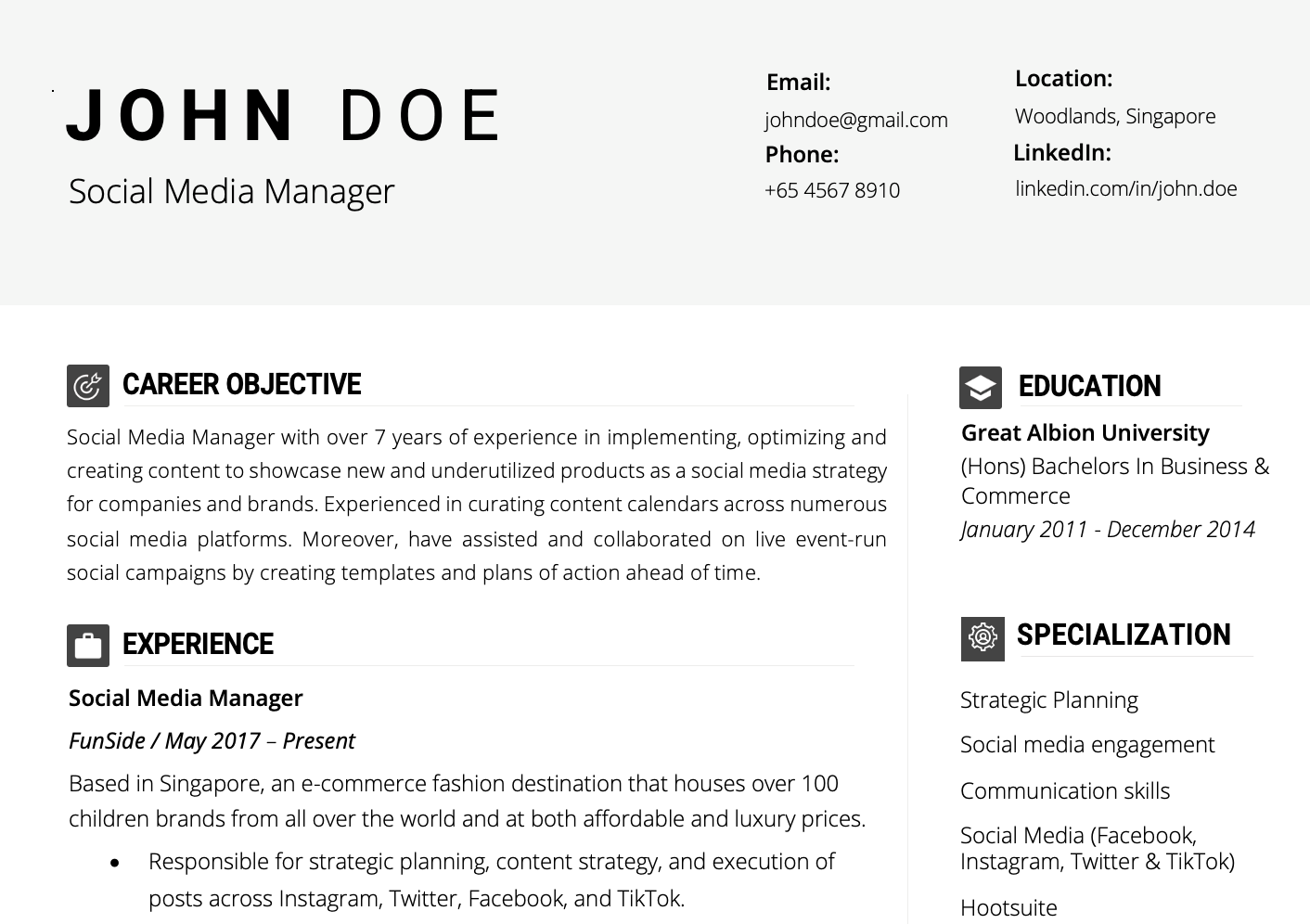
Keep all of the information on one page for a well-received resume. If your career spans further than a decade, you can get away with a two-page resume. Keep in mind that resumes should be concise and targeted.
This is the flow of a resume you should follow:
As for formatting, these are the basics you need to know:
When writing your summary, include a brief introduction into your professional background, qualifications, and motivation for advancing your career in this field. Give an example of why you enjoy what you do or why you wish to improve and expand your talents.
Example: Social Media Manager with over 7 years of experience in implementing, optimising and creating content to showcase new and underutilised products as a social media strategy for companies and brands. Experienced in curating content calendars across numerous social media platforms. Moreover, have assisted and collaborated on live event-run social campaigns by creating templates and plans of action ahead of time.
When drafting your work experience portion of your resume, keep two things in mind: bullet points and specific experience.
#1 Bullet Points
#2 Specific Experience
1) The Job Description: Generate social media plans by identifying trending topics and using own creative skills and working with our in-house creation team where necessary.
2) Your Experience: Created social media plans for several platforms, all in line with trending topics associated with the brand with the help of the social media team.
Even without any work experiences you can still craft a great resume as someone starting their career journey, after all everyone has to start from somewhere. Here’s what you can include instead of full-time work experiences.
Action words in resumes are adjectives that are used to describe achievements and experiences. It’s a terrific method to get the attention of the hiring manager and highlight your accomplishments. Words like these are great action words to consider when writing your resume:
Since a resume is short and to the point, here’s what to include and what to leave out.
In a separate piece of paper you’ll want to include the following to boost your chances at being selected for an interview. If you have a website with the following showcased, feel free to include your site under the contact information section of your resume.
If you’ve been meaning to up your value as a social media manager, there are a handful of certificates you should look into regardless if you’re starting out or a veteran looking to sharpen your skills. Many are offered solely online with great time flexibility to work with your schedule and learning pace. Here are some certificates worth considering:
Awards are a great reminder of the achievements you’ve accomplished for your company or with your industry.
A cover letter is a terrific complement to any resume because it allows you to go into greater detail about why you’re the best fit for the job. Instead of sending out generic resumes to each potential employer with an open position, a cover letter demonstrates your want to work for the company you’re applying to.
The structure of your cover letter matters as much as the content itself.
Make sure the font size and spacing are easily readable. When describing your successes and experiences, utilise action words to emphasise your relevant talents to the position you’re wanting to be recruited for.
Need a few more details?
Check out our in depth guides on writing a resume, CV and cover letter. All guides are suitable for any profession with tips for careers across the board.

ScrumMaster Certification is an emerging and trending certification that can be useful for many different careers such as Product Owner, Product Manager, Technical Lead, and many more. There are a few factors to consider when choosing the right ScrumMaster certificate, such as your career path or job role. This post will help you understand what ScrumMaster certifications are available, how they shape skill sets and the benefits of each one!
A Scrum Master is a role that acts as a “servant leader” to the larger team. They are expected to help create an environment of trust, honesty, and transparency within their teams through facilitation, coaching, collaboration skills, as well as conflict resolution tools and techniques. As well as being nimble enough to adapt to changes in technology or work environments quickly.
Scrum master certification allows professionals within technology and project management roles a way into furthering their education without having to spend years in school studying human behaviour and conflict resolution skills. The educational programs provide hands-on experience with real world scenarios where students learn necessary facilitation tools and techniques used by industry experts every day. Additionally, the classes cover information on managing remote teams/employees and how to adapt and apply changes in technology.
There are several ScrumMaster certification options available, which can be confusing for those entering the field or wanting to advance their careers. This post will help you understand what Scrum Master certifications are available and how they shape skill sets in order to make an informed decision when choosing a ScrumMaster certificate that is right for your career path.
There are five reputable providers of Scrum Master certifications available:
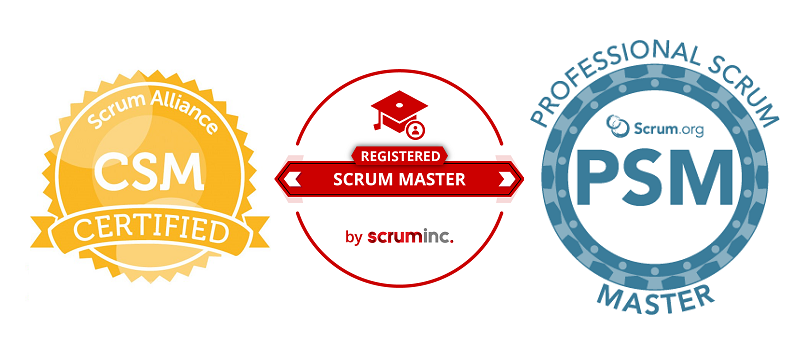
This certification is aimed at professionals that want to learn the requirements of a Scrum Master and how they can apply it in their current roles. In order to receive this certification, you must complete a course with one of the many Scrum Alliance certified instructors. The class is highly interactive and provides real world examples on how teams can integrate Scrum into their work environment.
The Professional Scrum Master (PSM) certificate program is designed for experienced Agile practitioners who are already familiar with concepts such as agile practices, product backlogs, iterations and scrum ceremonies. This program will provide you with tools and techniques necessary for managing complex projects using Scrum in real-world environments where business needs often change rapidly or do not exist until just prior to launch. Additionally this course provides an overview of the role and responsibilities of a Product Owner when working on agile teams along with having extensive knowledge around team dynamics. This is an excellent course for those who are looking to advance their careers with the focus of becoming Scrum Masters.
This certification focuses on preparing professionals to be effective product owners and team members in a business environment where they will work closely with project managers, leadership teams and executive stakeholders. The program provides scrum masters extensive training around techniques that can help them successfully manage multiple projects within fast-paced organisations or multi-disciplinary teams which may include developers, UX designers, testers and more. This class offers deep coverage into topics such as scaling agile software development practices across large enterprises while teaching students how to apply lean thinking principles when working on complex products/projects using Agile methodologies and Scrum.
The PMI-ACP® certification from Project Management Institute (PMI) certifies individuals in their knowledge and application of agile principles, practices and values when working on projects/initiatives. The program focuses on Agile frameworks and Scrum methodologies while providing students with extensive training around topics such as understanding how teams operate within an agile environment, managing priorities effectively using backlogs along with gaining insight into team dynamics which are essential for being successful in any role or career path involving Agile development. This course provides in depth guidance regarding how to build effective partnerships between business stakeholders and cross functional teams composed of product owners, scrum masters etc., so they can all contribute to the success of your Agile project.
SAFe certification is designed for experienced project managers who are seeking to improve their existing knowledge of Agile. This course will provide you with advanced concepts required to support complex projects using SAFe framework along with gaining an understanding about how Lean-Agile principles can help organisations achieve maximum efficiency within the software development lifecycle (SDLC). Subjects covered include managing portfolios, teams and releases while teaching students how to reduce waste and manage risks throughout the project life cycle.

Obtaining scrum knowledge can help you effectively manage big teams across several departments, better manage product deliverability, and increate employee morale.
A certification can help you get a promotion or a better job. Some jobs mandate Scrum certification; others are simply more marketable with it. The IT field is highly competitive, and having a formal qualification proves that you have the skills employers want. When applying for jobs, especially in larger companies, it is expected that you will have some form of formal training. The Certified Scrum Master credential recognises your employees’ confidence in you to lead an agile team effectively.
CSM jobs are in demand, and the CSM certification is one of the fastest-growing IT certifications available. If you’re already working as a Scrum Master or planning to take that direction, then this certification can help advance your career – and it’s also an excellent choice for those who are just starting out in the industry. Having achieved Scrum Master certification opens up doors to more senior roles such as Sr. Scrum Associate, Scrum Master, Sr. Scrum Master, Agile Coach, Scrum Trainer, Agile Leader and others.
In addition to earning a credential, those who earn Scrum certifications will grow in the following ways:
There are several benefits that an organisation receives when they hire a Scrum Master. The three major ones are:
The Scrum Master certification is a great way to increase your knowledge and skills if you are in the product and development role. Earning this credential will allow you to take on more senior roles within organisations that are looking for someone with these qualifications. Scrum Master certification can help you get a promotion or a better job. This certification proves that you can lead an agile team effectively by producing effective products. The Certified Scrum Master credential recognises your employees’ confidence in you to lead an agile team effectively.

Google Cloud Certification certifies that the holder has deep knowledge of Google cloud products and technologies. It’s a professional certificate for individuals who want to take their careers in different directions as well as product-specific certificates which certify an individual’s proficiency with one Google product or technology. The benefits depend on the type of certification you receive, but generally speaking, they include improving your salary potential by increasing your marketability and providing opportunities for advancement within your field.
The Google Cloud Platform, as the name implies, is a Google-developed product that has aided in the transformation and progress of the world. For enterprises of all sizes throughout the world, Google Cloud provides security, simplicity, dependability, and scale.
It’s used by some of the biggest names in technology, including Netflix, GoPro and Spotify. Google Cloud Platform offers a lot more than just GCP certification. The platform itself is highly beneficial for companies because it provides them with the tools needed to run their businesses online, without worrying about maintaining servers or data centres which means that they can focus on what matters most – their business.
Google Cloud certification is a great step in the right direction for those that are interested in building their careers and expertise working with GCP products and services. The Google Cloud Platform offers many benefits to companies, but it also has several advantages for IT professionals who want to make a career out of helping businesses use cloud technology to reach their maximum potential.
Google Cloud certification is the top option for those that want to become a part of GCP. It’s also beneficial for companies because they can find candidates who have experience and knowledge working with GCP products and services. If you’re interested in boosting your career or gaining valuable skills, Google Cloud certification may very well be a great place to start.
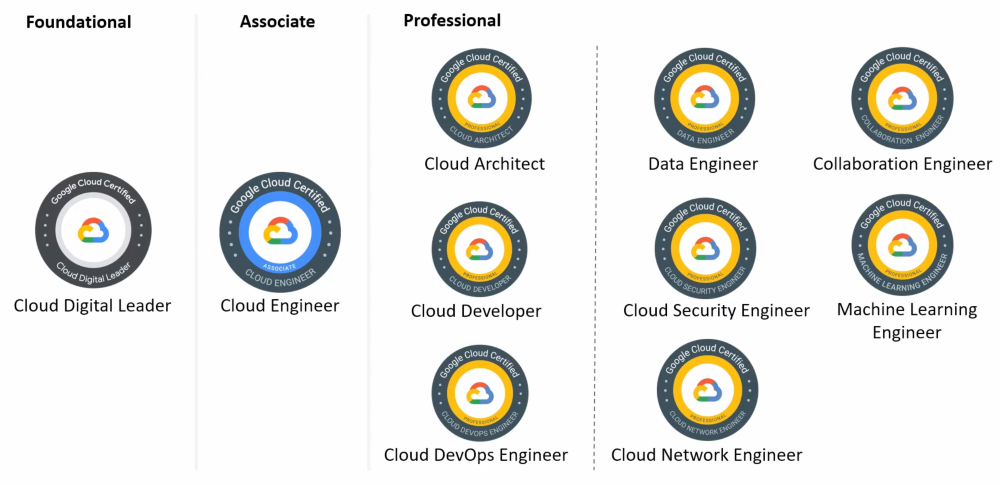
The Google Certification levels are as follows:
Currently, only the Cloud Digital Leader is Foundational. This accreditation identifies and examines Google Cloud core products and services’ various capabilities, as well as how they can be utilised to meet organisational objectives. A Cloud Digital Leader understands fundamental cloud ideas and can apply cloud computing knowledge to a variety of applications.
The Cloud Engineer certificate is a course that qualifies you as an Associate. Cloud Engineers install, maintain, and troubleshoot software solutions for businesses. They use Google Cloud Console and the command line to perform basic platform-based operations on Google Cloud. For those going on to pursue Professional certifications, this is the ideal place to get started.
It covers all these aspects:
Each Professional level credential is relevant to a certain complex function and role. It assesses advanced skills in design, implementation, and management of Google Cloud. It’s recommended to have 3+ years of industry experience, including 1+ years on Google Cloud.
The available certificates are available for the following roles:
Start with the foundational Cloud Digital Leader certificate. This is the ideal location to start since it covers the fundamental skillsets for creating, monitoring, and maintaining Google Cloud projects. It’s also possible to take Associate Cloud Engineer certificates next since it’ll help prepare you for Professional levels. You can always return to the Foundational certs if you need a refresher.
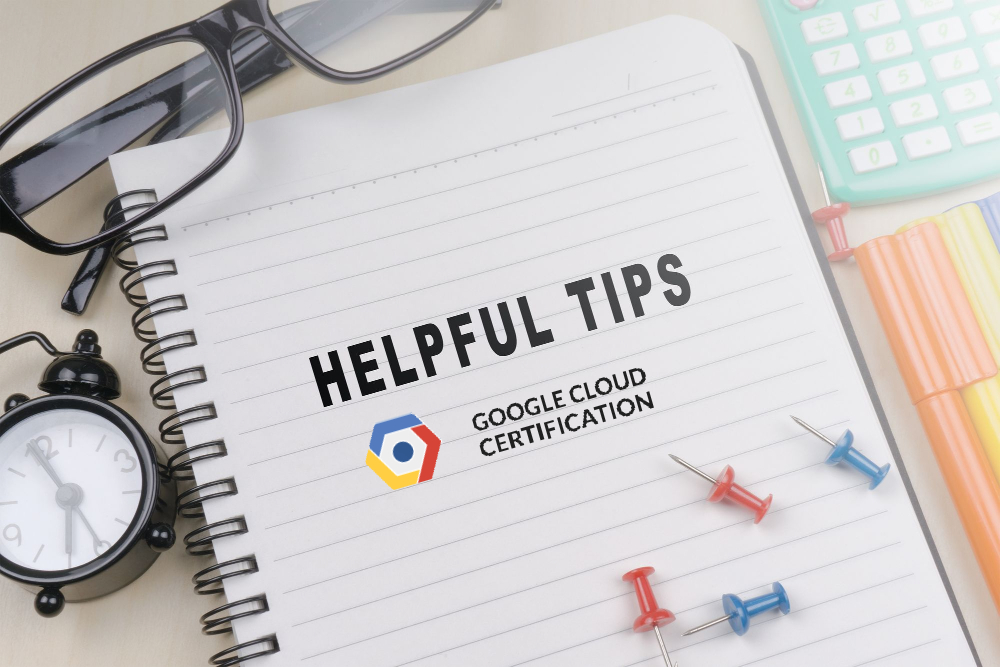
Once you are ready to move up in your career or down a specific career path, it’s time to take the Professional certifications. After gaining an understanding of several technology areas, you can choose to focus on a select few with the professional certificate. For example, if you’re interested in machine learning and data analytics, go for Machine Learning Engineer Professional; or if you’re into DevOps, then the Cloud DevOps Engineer Professional is outstanding. This is a great way to build your expertise and use the cloud for its full advantage.
Google provides more information on certification here.
Google Cloud certification offers many benefits to those pursuing certifications, including:
Google Cloud certification is a great option for anyone interested in building their career or gaining valuable knowledge working within the Google Cloud Platform. The benefits of obtaining this certification are numerous and it’ll open up new opportunities that can help you to build your future with GCP products and services. While some may not see the value in obtaining a GCP certification, it’s one of the most beneficial certifications available on the market today because of what it can do for your career. Get started on your journey today and begin searching for the Google Cloud certification that’s right for you.

Microsoft Azure Certification is like an advanced technical degree in cloud technology that you can earn by passing several different exams. Like college degrees, Microsoft Azure Certification comes with perks; but this time they aren’t just financial benefits – they’re job-related.
Microsoft Azure certifications are essential for those interested in working in the cloud sector. They provide a wide range of opportunities for employment. The Microsoft Azure certifications give cloud administrator, developer, security engineer, AI engineer, data engineer, solutions architect, and DevOps engineers assurance in their jobs.
In this highly competitive field, obtaining a Microsoft Azure certification can help to create job security. Employers are always looking for cloud engineers to help build their systems or create new ones that’ll run better on Azure. The certification can be used as a test of knowledge, allowing employees who have it to rise above the rest. Cloud computing has a number of advantages for the holder of this certificate because many organisations are transferring their operations to the cloud.
Your certifications demonstrate your abilities as a Microsoft Azure certified expert. Because there’s a huge need for cloud computing experts, you may expect to get higher pay packages across the world.
With demonstrated experience in Azure, you can be a key asset to the company’s success. The Azure certifications help you reap the benefits of a successful Azure cloud computing environment.
The input (Microsoft Azure Certifications) will help you with your knowledge and skills in the IT Industry. The Azure certification will give you the skills to design, implement and manage cloud-enabled solutions. With this level of expertise in Microsoft’s product suite it is easy to see why employers are willing to pay more for Azure certified professionals. A list of sectors, and the certification’s benefits for each one is provided below.

An organisation can use Microsoft Azure cloud solutions to offer subscribers a world-class experience. In the entertainment industry, you’ll be able to provide personalised content to subscribers in a timely manner. This can help prevent angry messages from fans when there’s a delay in stream time.
Microsoft Azure can help companies to get more out of existing resources by providing better management, scalability, and reliability of data center resources.
An organisation can create intelligent applications across industries with an artificial intelligence cloud platform powered by Azure AI. Get a head start by building and training intelligent models through a vast library of algorithms, data sets, and tools.
Microsoft Azure cloud services can help companies modernise the manufacturing process from planning to production. Companies will have access to computing power for IoT devices as well as predictive analytics so that they can improve quality control and build products customised for their customers.
Eliminate the boundaries of brick and mortar with an intelligent, mobile-first retail experience powered by Azure IoT platforms. The company can get ahead of the curve in building the future of commerce by engaging with consumers both online and offline.
Gain a customer-driven view into operations to provide customers with a safe and secure experience. You can also gain real-time insights into the markets to help give customers confidence that they are using the best available information when making decisions.
Drive healthcare forward by building intelligent solutions for patient care, increasing operational efficiency, and enhancing clinical decision-making. Microsoft Azure can help your organisation manage the ever-growing volume of data from a variety of sources via powerful tools for big data analytics and machine learning when developing healthcare solutions.
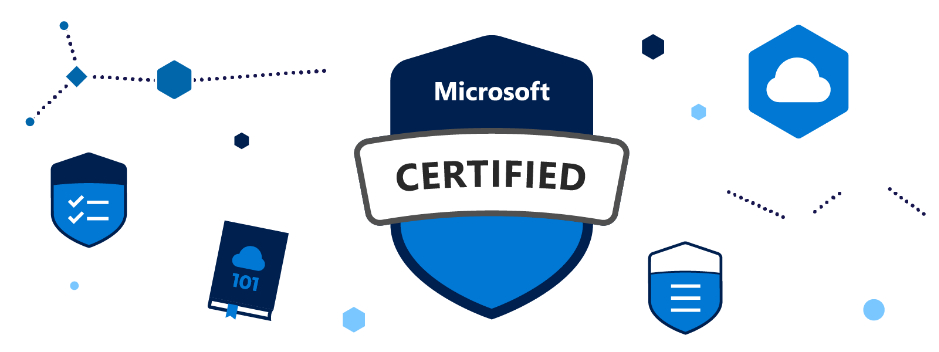
The following 12 Microsoft Azure certifications are divided into three levels (Fundamentals, Associate, and Expert) and include 14 exams:
This credential verifies the basic understanding of Azure cloud services. This is a great resource for non-technical individual interested in learning how to use cloud technologies such as sales, procurement, and marketing.
Cost: $99
In order to obtain this certification, you must have a fundamental grasp of artificial intelligence (AI) and machine learning (ML). This certificate will test user knowledge on AI workloads and considerations, identify features of common AI workloads, and guiding principles for responsible AI.
Cost: $99
Candidates who wish to acquire this new credential should have an understanding of core data concepts such as relational or non-relational data in the context of Microsoft Azure architecture. This certificate will cover the following data analytics topics: batch and streaming data, and core ideas of data analysis, relational Azure data services such as comparing PaaS, IaaS, and SaaS delivery models. Candidates will learn to execute basic management functions for relational data, such as provisioning and deploying relational data services, and describing query techniques for data using SQL language.
Cost: $99
This test will evaluate the knowledge and skills of candidates in Azure compute, storage, virtual networking, and monitoring the Azure environment. A Microsoft Azure Administrator is a subject-matter expert (SME) who is in charge of setting up an organisation’s cloud infrastructure using Azure Active Directory, role-based access control (RBAC), and subscriptions and governance such as customising Azure policies and resources.
Cost: $165
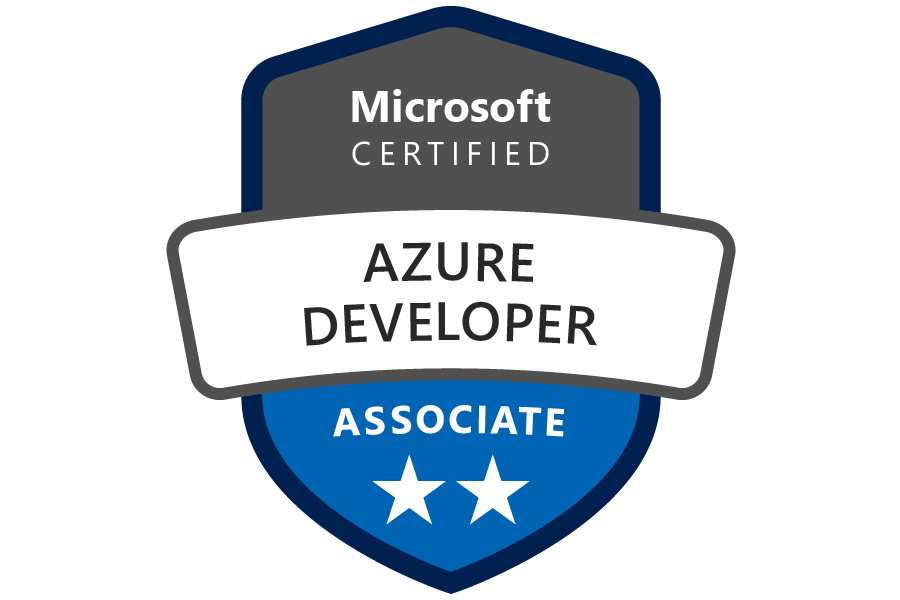
Successful candidates will demonstrate skills for designing, creating and implementing applications on Azure. Knowledge of cloud technologies such as data storage and connections, Azure SDKs, debugging, monitoring, and performance tuning. This certificate is focused on Microsoft Azure development using a variety of tools including implementation of IaaS services such as provisioning of VMs, creation of RM templates, and implementation of Azure functions Develop solutions for Cosmos DB storage and blob storage Implementation of Azure security, and role-based access (RBAC).
Cost: $165
Candidates who pass this exam will demonstrate knowledge of designing, deploying and monitoring cloud infrastructure securely. The area tested includes monitoring and analytics, implementing secure identities, configuring Azure security solutions such as encryption and threat protection, which includes Configure MS AD for workloads, Azure AD privileged identity management, and Azure tenant security. Candidates will be asked questions on their understanding of how to use Azure monitor and log analytics, deal with security alerts, and set up security policies.
Cost: $165
Candidates who obtain this certification will demonstrate the ability to ingest data from a variety of sources and create, develop, test machine learning models. Candidates must be able to use Azure Machine Learning Services such as creating experiments using Studio & Web services APIs. This certificate covers how to use data modelling and data transformation, as well as how to create a solution for machine learning.
Cost: $165
This exam is intended for data scientists who wish to gain knowledge of Microsoft Azure and apply their skills in the cloud. It covers general Azure machine learning approaches in training, evaluation, and deployment of models that are used to solve business problems. The candidate will be tested on their knowledge of how to create and setup Azure data science Environments, assess deployment environment restrictions, evaluate and propose tools to satisfy system demands.
Cost: $165
To be a certified Azure Data Engineer, you must pass two tests: DP-200 and DP-201.
This exam assesses your ability to create and manage data solutions that include provisioning of data storage services, batch data processing, streaming, security standards, data retention regulations, and accessing external data sources. Candidates must have the skills to set up and manage Azure SQL Databases, Azure Cosmos DB, Azure Data Lake Storage, Azure Stream Analytics, and Blob storage services.
This exam assesses your skills in designing data solutions that are scalable, reliable and secure. The areas covered include choosing the right technology for storing, processing, analysing large volumes of data to improve customer experience. Candidates will be assessed on their capacity to develop relational and non-relational cloud data stores, real-time and batch processing solutions, and allocate computing resources. Knowledge of design security solutions such as encryption, auditing, and data privacy is required.
Cost: $165 each
This is a role-based Azure certification exam that would be perfect for individuals who want to manage cloud-based database systems. The information associated with this exam are administering and managing relational databases on cloud and on-premises developed on Azure data services and SQL Server. This certificate assesses your ability to Plan and put in place data platform resources such as create database solutions for popular platforms, as well as customise deployment templates.
Establish a secure database environment, including Azure AD authentication and security for data at rest and data transit. A candidate must be good at finding problems in the system, doing maintenance activities when needed, and setting up resources so that it runs smoothly. Finally, perform backups and assess queries, index design, and database tables. Planning and implementing High Availability and Disaster Recovery (HADR) strategies for continuous services.
Cost: $165
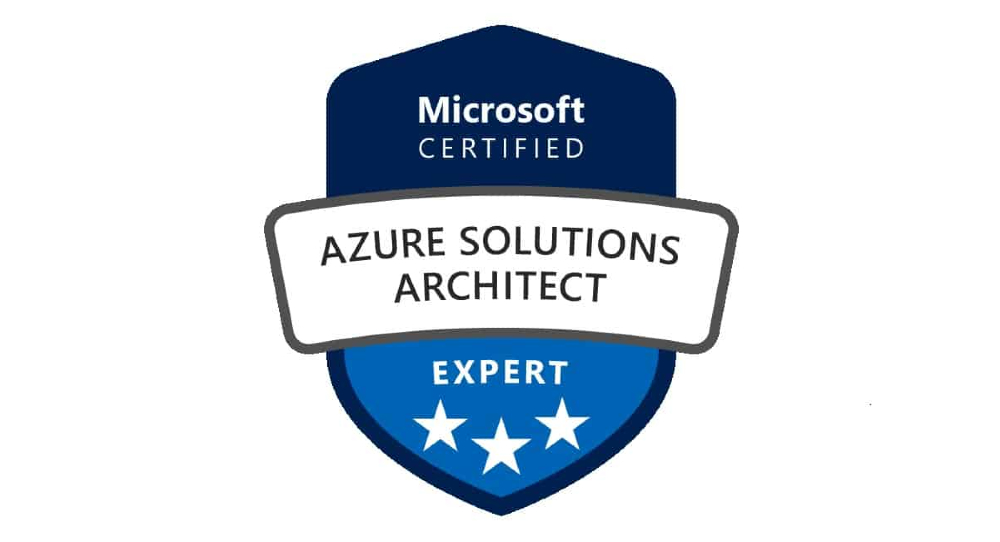
You must pass two tests to become an Azure Certified Solutions Architect: AZ-303 and AZ-304.
This exam is for architects who are responsible for designing and implementing solutions that use Azure services, including web apps, virtual machines, SQL databases, and business networks. Candidates who wish to achieve this credential should be experienced in deploying cloud resources on Microsoft Azure, such as compute, storage, networking, and security. This certificate assesses your competence in deploying Azure AD, infrastructure monitoring, storage accounts, and virtual networking.
The Exam is designed to evaluate candidates’ abilities to gather requirements, optimise consumption strategy, and construct auditing and monitoring procedures. The certification also assesses candidates’ abilities to plan authentication, authorisation, and identity management. It also covers design compute, storage, networking, and monitoring solutions. Design deployment, migration, and API integration tactics are all covered.
Cost: $165 each
This exam tests your skills in building, deploying, and managing cloud services. Candidates are tested on their ability to implement DevOps practices including Continuous Integration (CI), Automated testing of code repos, Implementing CI/CD pipelines using Azure tools
Cost: $165 each
When deciding which certification to get, you should first think about what your career goals are and what skills it’ll take to get there. For example, if you want to work in technical management, you might want to get certified as a Microsoft Certified Solutions Developer Microsoft Specialist for Azure Solutions Architect and Azure DevOps Engineer. This will demonstrate that you have the necessary skills for this position and show that you’re knowledgeable about both Windows and Azure skills.
There are plenty of ways to become more valuable with this certification. You’ll learn about some of the ways to do this on the Microsoft website. They include skills that’ll help you manage, deploy, and monitor your Azure solutions. Here are some of the skills that you’ll learn after receiving the certification:
With the Azure certifications offered, you’ll not only be able to develop and deploy cloud solutions but also manage your cloud services. This certification can increase your value in the job market and enable you to tend to many different kinds of projects. From managing web apps to developing and deploying cloud services, you’ll be able to handle it all with your Azure certifications. You have to put in some time and effort, but the knowledge and experience you gain from getting a certification is more than worth it!
Microsoft Azure certifications are an excellent method to demonstrate expertise and place and significance in a variety of industries. This is because Microsoft is not a career path, but rather a tool used to help individuals progress in their professions. By opting for one or more of these certifications, you can show employers that you have the necessary qualifications to be successful on their team. With the right cert, you can also increase your salary and demand a higher position at work. There are benefits to every career path in the tech industry that this certification will help you achieve.